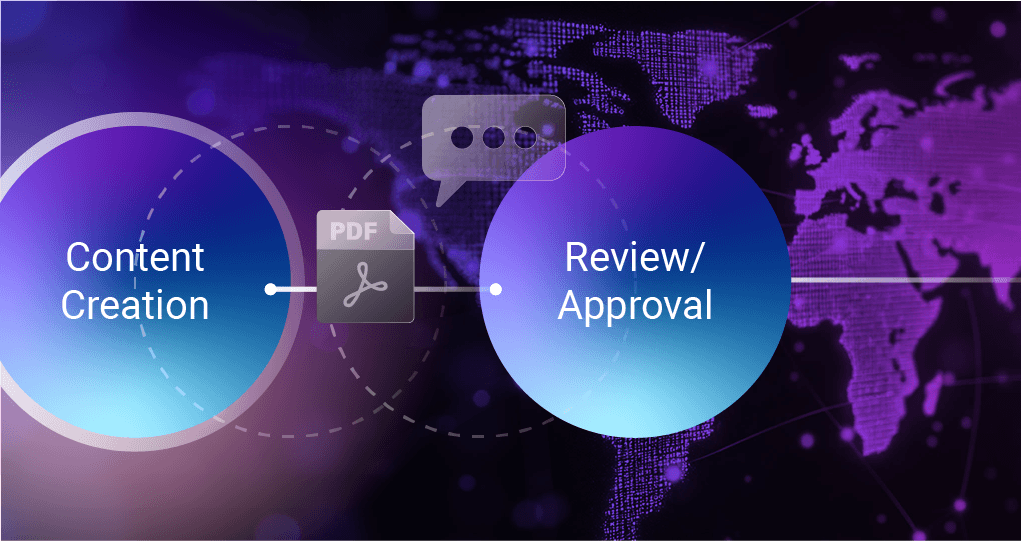Managing content at the global level isn’t easy. You’re juggling teams in different time zones, regional approvals, multi-language content, and ever-growing volumes of digital assets. If your DAM system can’t scale with that complexity, it slows everything down.
A scalable Digital Asset Management (DAM) system is built to handle it all—without breaking under the weight of your operation.
TL;DR
Managing content globally is complex—multiple languages, teams, and approvals slow things down. A scalable Digital Asset Management (DAM) system streamlines this by offering cloud infrastructure, multi-language support, localized workflows, and centralized control. It helps teams move faster, stay consistent, and scale effortlessly. Aprimo’s DAM is purpose-built to support global content operations without compromising efficiency or brand integrity.
Why global teams need scalable DAM
When you’re working across brands, geographies, and business units, even small content challenges get amplified. A scalable DAM brings order, visibility, and control to content workflows—so teams can move faster without losing consistency or compliance.
Key features of a scalable DAM system
| Feature | Why It Matters |
|---|---|
| Cloud-native infrastructure | Ensures performance and access across time zones |
| Multi-language support | Makes metadata, tagging, and UI localized and user-friendly |
| Granular permissions | Controls access by team, region, or business unit |
| Automated workflows for localization and approvals | Keeps content moving across teams and languages |
| Global distribution and usage tracking | Uses CDN and analytics to scale delivery and visibility |
How it helps teams move faster
A scalable DAM doesn’t just store content—it connects people and processes. It ensures the right teams get access to the right assets at the right time, while protecting brand standards and regulatory requirements.
For example, creative teams can upload assets once, tag them correctly, and route them automatically to regional teams for review. Approved content gets distributed globally—without duplicated effort or loss of control.
It also enables better reuse, since localized teams can pull from a central library instead of recreating assets from scratch.
What to look out for
Some DAM systems hit a ceiling when it comes to scaling. You’ll want to avoid platforms that:
- Struggle with multi-language interfaces or tagging
- Don’t offer regional access control
- Can’t automate approvals across multiple teams or markets
- Aren’t optimized for global file delivery
If your content ecosystem spans countries and departments, your DAM should support that complexity, not add to it.
Final Take
A scalable DAM is more than a content library—it’s infrastructure. It keeps global teams aligned, on-brand, and able to deliver quickly, no matter where they are or what market they serve.
For large organizations, it’s a core part of content operations—and essential to working at speed and scale.
FAQ
What is a scalable DAM system?
A scalable Digital Asset Management (DAM) system is designed to support the growing needs of global teams by handling large volumes of content, supporting multi-language environments, and enabling remote collaboration—without sacrificing performance or consistency.
Why do global teams need scalable DAM?
Global teams deal with diverse content types, regions, and approval processes. A scalable DAM system brings order, visibility, and control, helping teams work faster while maintaining brand consistency and regulatory compliance.
How does a scalable DAM help teams move faster?
It reduces duplication, speeds up content delivery, and ensures the right people have access to the right assets at the right time. Creative teams can upload and distribute content globally while maintaining centralized control.
Who benefits most from a scalable DAM?
Large organizations with global marketing, compliance, and creative teams benefit most. These include industries like pharmaceuticals, finance, retail, and CPG.
Can Aprimo support global DAM needs?
Yes, Aprimo’s DAM is purpose-built for global scale, supporting multi-language metadata, flexible permissions, and localized workflows while ensuring centralized control and brand alignment.



